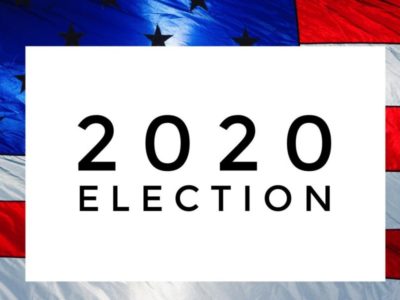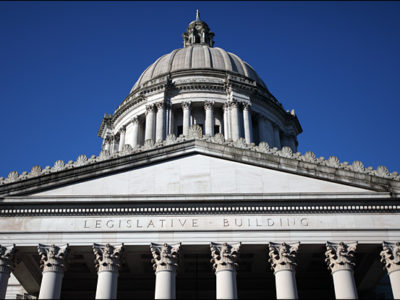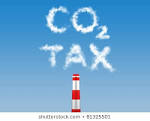HUGE
New Addition to California's Infill Housing Bill Could Transform the State's Land Use
If there is one journalistic phrase I despise, it is "game-changer." Everything seems to be a game-changer, no matter how small. But amendments just approved by the California State Senate for SB 50, Scott Wiener's controversial bill upzoning lots near transit could be, well, a game-changer: On Wednesday, a key committee signed off on Senate Bill 50 — San Francisco Sen. Scott Wiener’s bill to allow denser, taller housing around transit and in communities with lo...
CONTINUE READINGClimate Change & the Democratic Candidates
The candidates are all in favor of climate action but there are significant variations in their stances.
It’s hard to keep track of the twenty or so Democrats who are in the running for the 2020 presidential nomination. The differences between them on climate policy are minor compared with the gulf between them and President Trump. All of them support the Paris Agreement, unlike Trump. And all of them vow to restore Obama’s climate change regulations. But it’s worth taking a look at some of the nuances, for whatever clues they may give us about what the even...
CONTINUE READINGWhy Is Los Angeles Embracing Stupid Growth?
Council Wants Hotels, But No Housing
Yesterday, I expressed wonder that the City of Los Angeles actually did planning right for a change. Obviously, I jinxed it. Reducing VMT, and thus carbon emissions, requires cities to plan and zone for affordable housing (whether defined as deed-restricted or simply at a reasonable market rate). But despite city leaders' claims of an affordable housing crisis, the City Council seems more interested in satisfying the hospitality industry: The Los Angeles City Cou...
CONTINUE READINGCalifornia groundwater management, science-policy interfaces, and the legacies of artificial legal distinctions
By Dave Owen and Michael Kiparsky
One of the many noteworthy features of California’s Sustainable Groundwater Management Act (SGMA) is that it requires local government agencies to consider and address the effects of groundwater management upon interconnected surface water. That requirement is an important step towards rationalizing California water management, which has long treated groundwater and surface water as separate resources. The requirement also is part of a larger story about evolving s...
CONTINUE READINGGrandma Saves The City!
New Data Shows Hope For Affordable Housing In the Most Unlikely Place: Los Angeles
It’s not often that you get some good planning news from Los Angeles, but at least if you believe the City’s numbers, there are some. The Planning Department’s latest housing numbers, from its year-end 2018 Quarterly Report, state that in light of SB 1069 (Wieckowski), which substantially liberalized the construction of Accessory Dwellling Units (ADUs), better known as “Granny Flats,” the city’s approval went by seventeen times. SB 1069 came into force...
CONTINUE READINGThe Trajectory of Environmental Law Scholarship: 1975-2018
The volume of scholarship has swelled, as attention has turned to climate and renewable energy.
Over the time I’ve been following environmental law, there’s been a dramatic increase in the amount of scholarship in the field. Back in 2011, I did a search of the Westlaw "Journals and Law Reviews" database for (“environmental regulation” “air pollution” “water pollution” “endangered species”) with date restrictions. Although this search is only an approximation, I figured that it should capture a high proportion of environmental articles an...
CONTINUE READINGTrump’s Campaign to Gag Activist Shareholders
His recent executive order tries to "protect" oil companiy management from smart climate planning.
Exxon management was not pleased when shareholders forced them to produce a report on how climate change would impact their business. In May, Exxon is facing another shareholder vote on whether to form a climate change committee on the Board of Directors and whether to disclose how sea level rise will impact its investments on the Gulf Coast. The SEC rejected Exxon’s plea to quash the shareholder vote. Naturally, President Trump is siding with Exxon management...
CONTINUE READINGJournalism and Political Polarization
Reporters Might Hold A Key To Improving Environmental Politics
It's no surprise that American politics has gotten significantly more polarized over the last three decades, so it stands to reason that legislatures have gotten more polarized as well. But in a recent article in the Journal of Political Economy by James Snyder and David Stromberg, brought to my attention by Professor Seth Masket writing in Vox, another cause of polarization stands out: We estimate the impact of press coverage on citizen knowledge, politicians’ ac...
CONTINUE READINGCan Voter Registration Combat NIMBYism?
Homeless Voting Can Change the Urban Political Calculus
NIMBY land use politics stems from a classic political process failure: the people who would benefit from more housing do not yet live in the jurisdiction where it will be built -- and for the most part, do not even know that they will be the ones who will live there. Thus, local officeholders have few political incentives to take any risk to approve it. This problem is augmented significantly when it is a question of affordable housing: for-profit developers can at ...
CONTINUE READINGHappy Tax Day!
It's the perfect time to talk about a carbon tax.
Justice Oliver Wendell Holmes once said that taxes are the prices we pay for a civilized society. A carbon tax, if we ever get one, might turn out to be the price we pay for a sustainable planet. I'm not wedded to it as a tool for cutting carbon, and I don't think it would be sufficient by itself. But we shouldn't dismiss it too quickly just because it seems politically infeasible. As we've learned repeatedly in the past decade, the political winds can shift quickl...
CONTINUE READING













